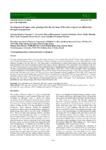Please use this identifier to cite or link to this item:
http://www.alice.cnptia.embrapa.br/alice/handle/doc/1052370Full metadata record
| DC Field | Value | Language |
|---|---|---|
| dc.contributor.author | NASCENTE, A. S. | pt_BR |
| dc.contributor.author | HEINEMANN, A. B. | pt_BR |
| dc.contributor.author | ALVES, L. C. | pt_BR |
| dc.contributor.author | ROSA, P. H. | pt_BR |
| dc.contributor.author | NAVES, L. F. V. | pt_BR |
| dc.contributor.author | GARCIA, A. C. F. | pt_BR |
| dc.date.accessioned | 2016-09-05T11:11:11Z | pt_BR |
| dc.date.available | 2016-09-05T11:11:11Z | pt_BR |
| dc.date.created | 2016-09-05 | pt_BR |
| dc.date.issued | 2016 | pt_BR |
| dc.identifier.citation | Australian Journal of Crop Science, v. 10, n. 8, p. 1118-1126, 2016. | pt_BR |
| dc.identifier.issn | 1835-2707 | pt_BR |
| dc.identifier.uri | http://www.alice.cnptia.embrapa.br/alice/handle/doc/1052370 | pt_BR |
| dc.description | The super early genotypes (SEG) of dry bean (Phaseolus vulgaris L.) have a shorter life cycle (65-75 days) when compared with the season length of traditional cultivars (90-100 days). Timing of nitrogen top-dressing fertilization could be different because of this reduction in length of the SEG life cycle. This study aimed at characterizing, by using growth analysis and vegetation index, super early genotypes of dry bean development as affected by timing of nitrogen application. Field experiments were conducted in the 2014 and 2015 growing seasons in central Brazil with a randomized block experimental design with split plots scheme and four replicates. The plots comprised the dry bean genotypes (Colibri ? check cultivar, CNFC 15873, CNFC 15874, and CNFC 15875), and subplots comprised applications of N at different timings: 90 kg of N at sowing, 90 kg N at top-dressing; 45 kg of N at sowing plus 45 kg at top-dressing, with urea as the source of N. We also used a control treatment without N application. The CNFC 15874 super early genotype of dry bean had the higher grain yield (2776 kg ha-1) and differed from the CNFC 15873 genotype (2492 kg ha-1). Nitrogen fertilization allowed higher grain yield (2619 kg ha-1, when applied N at sowing, 2605 kg ha-1, when applied N at sowing and at top-dressing, and 2680 kg ha-1, when applied N at top-dressing) than the control, 2360 kg ha-1 (no N fertilization). The time of N fertilization in super early genotype of dry bean did not affect grain yield. | pt_BR |
| dc.language.iso | eng | eng |
| dc.rights | openAccess | eng |
| dc.title | Development of super early genotypes for the dry bean (Phaseolus vulgaris) as affected by nitrogen management. | pt_BR |
| dc.type | Artigo de periódico | pt_BR |
| dc.date.updated | 2017-03-07T11:11:11Z | pt_BR |
| dc.subject.thesagro | Feijão | pt_BR |
| dc.subject.thesagro | Phaseolus vulgaris | pt_BR |
| dc.subject.thesagro | Cerrado | pt_BR |
| dc.subject.thesagro | Nitrogênio | pt_BR |
| dc.subject.thesagro | Agricultura sustentável | pt_BR |
| dc.subject.thesagro | Fertilidade do solo | pt_BR |
| dc.subject.thesagro | Fertilizante | pt_BR |
| riaa.ainfo.id | 1052370 | pt_BR |
| riaa.ainfo.lastupdate | 2017-03-07 | pt_BR |
| dc.contributor.institution | ADRIANO STEPHAN NASCENTE, CNPAF; ALEXANDRE BRYAN HEINEMANN, CNPAF; LUCIANA CHRISTINA ALVES, FACULDADE DE MONTES BELOS, GO; PAULO HOLANDA ROSA, Uni-Anhanguera, Goiânia-GO; LUIS FERNANDO VIEIRA NAVES, Uni-Anhanguera, Goiânia-GO; ANNE CARULLYNE FRANCINO GARCIA, Uni-Anhanguera, Goiânia-GO. | pt_BR |
| Appears in Collections: | Artigo em periódico indexado (CNPAF)  | |
Files in This Item:
| File | Description | Size | Format | |
|---|---|---|---|---|
| CNPAF2016asn.pdf | 711,92 kB | Adobe PDF |  View/Open |









